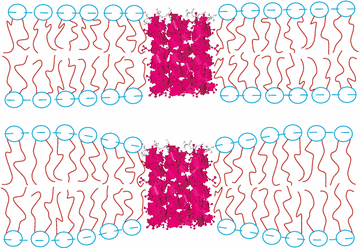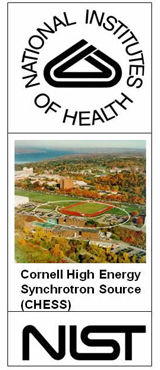
Funding
Membrane Structure and Interactions Lab (MSIL)
Research Highlights:
The Membrane Structure and Interactions Lab was funded for many years through the National Institutes of Health, General Medicine, most recently to study the interaction of HIV peptides with membranes. We collect x-ray synchrotron data at the Cornell High Energy Synchrotron Source (CHESS) which is funded by both the National Science Foundation and the NIH. Undergraduates have been funded through the Howard Hughes Medical Institute, administered through the Department of Biological Sciences, Carnegie Mellon University. Additionally, undergrads have obtained Small Undergraduate Resarch Fellowships, and International Small Unergraduate Research Fellowships at CMU to fund summer research. Professor Tristram-Nagle was also the recipient of a $77,000 equipment grant administered through the National Institutes of Science and Technology (NIST) for the purpose of construction of a new hydration chamber for neutron scattering. This chamber has now been fabricated and tested at NIST. Professor Tristram-Nagle received in 2010 the third annual Charles E. Kaufman Award from the Pittsburgh Foundation in the amount of $50,000. Professor received $5,000 in 2014 from the Berkman Foundation. Professor Tristram-Nagle is now receiving partial funding through two collaborations at the University of Pittsburgh in the Department of Environmental and Occupational Health with Professors Toni Deslouches and Peter Di for the study of the biophysics of antimicrobial peptides. She is also receiving partial funding through a collaboration with Dr. Steve Hall, pulmonologist, at Oregon Health and Sciences University to study the biophysics of the lung surfactant proteins SP-B and SP-C.
|
|
